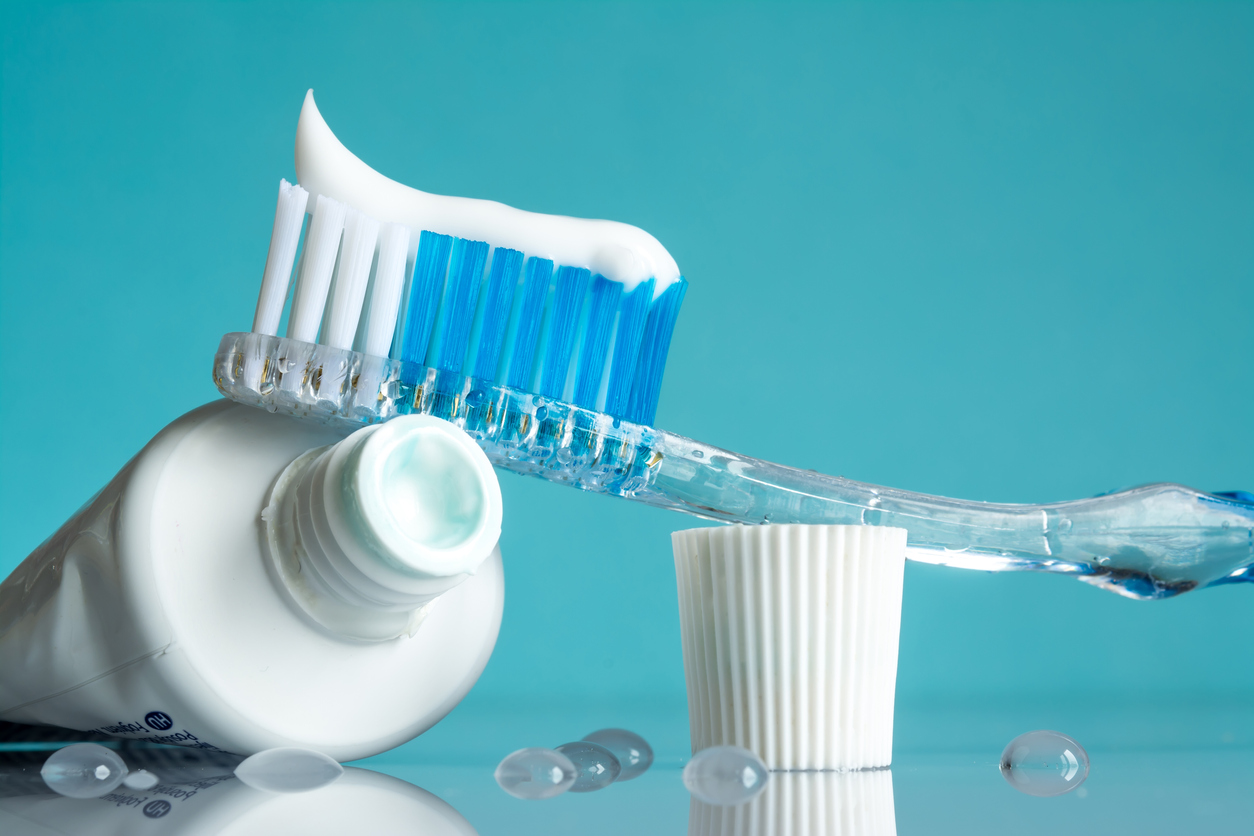Biotic Toothpaste for Better Oral Health
A healthy microbial population is necessary to keep the mouth’s homeostasis stable. Many microbial communities live in our mouth cavity, a complicated biological niche. Both pathogenic and beneficial microorganisms have been reported to be present in the buccal cavity. When there is an imbalance in the oral microbiota, many opportunistic pathogenic bacteria multiply and develop. These microbes are the root of many disorders that affect the teeth, including gingivitis, cavities, tooth decay, foul breath, bleeding gums, etc. Biotic toothpaste is finding grounds as an innovation for oral health.
Gone are the days when pre- and probiotics were thought to be beneficial to gut health only. With numerous research and trials, it has been proven that pre-and probiotics also influence oral health. It is the most effective method of establishing a healthy microbiome. Of the various ways this can be achieved, biotic toothpaste tubes are trending off late in the market. In this article, we will focus on the different aspects of biotic toothpaste in terms of its functions & benefits, working mechanism, consumer acceptance, and market trends & analysis.
What is a Toothpaste?

Toothpaste, either a gel or a paste, is used to eliminate plaque, a sticky film of bacteria and food particles perpetually produced and deposited on the teeth’ surfaces. It contains fluorides as one of the chief constituents, which helps fight gum disease, strengthens tooth enamel, prevents tooth decay, and maintains good oral health.
Toothpastes comprise several different ingredients, including abrasives, fluorides, surfactants, antimicrobial agents, flavoring agents, etc. Many toothpaste varieties, including fluoridated, herbal, sensitivity, whitening, smoker’s, kid, and tartar control toothpaste, are readily available on the market. The toothpaste listed above contains varying active ingredient ratios that aid in treating various dental issues.
Problems Associated with Conventional Toothpaste
Toothpaste is composed of different ingredients, which are utilized to target various oral problems. However, these ingredients also provide some serious issues. Fluoride toothpaste consumption carries several risks, including the possibility of developing dental fluorosis, stomach problems, acute poisoning, skin rashes (perioral dermatitis), and problems with glucose metabolism. When ingested in excess, it acts as a poison.
Conventional toothpaste uses several chemically derived substances to kill off harmful bacteria. Still, in the process, it also wipes away healthy bacteria essential for maintaining the oral microbiota. Rather than simply eliminating harmful bacteria, we might focus on encouraging the growth of beneficial bacteria in the buccal cavity, which will unavoidably decrease the number of pathogenic bacteria. Other than that, those harmful preservatives and antimicrobials can also cause severe health issues like hormonal disruption, fertility & reproductive disorders, etc.
Biotic Toothpaste – A Comprehensive Solution
Probiotics are living microorganisms with known health advantages, and more products are being introduced to the market. Probiotics and prebiotics have historically been linked to gut health, and most clinical research has focused on how to use them to prevent or cure gastrointestinal illnesses and infections. Many studies have shown that probiotics and prebiotics may help maintain oral health. Various skincare and personal care products use probiotics, prebiotics, and post-biotics.
Probiotics are living bacteria or food items containing living microbes that positively impact the host’s health when used in sufficient quantities. Lactobacillus paracasei, Lactobacillus sp., Streptococcus salivarius K12, SymReboot OC, and Bifidobacterium sp. are some exemplary probiotics that are employed.
Prebiotics are indigestible dietary components that selectively stimulate the growth and activity of one or a small number of bacteria. They have a positive impact on the host. Majorly used prebiotics are Chondrus crispus seaweed, Hydrogenated starch hydrolysate (sorbitol), inulin, alpha-glucan oligosaccharides, yacon extract, etc.
Probiotic microorganisms with biological activity in the host produce postbiotics, which are non-viable bacterial products or metabolic byproducts. Probiotics, prebiotics, and postbiotics have been employed to create toothpaste free of triclosan, fluorides, sugar, artificial flavors, preservatives, and detergents (like SLS). As a result, all the adverse effects of regular toothpaste are eliminated.
Mechanism of Action
Biotic toothpaste works by repopulating the oral microbiome with good bacteria that support dental, immunological, and upper respiratory health while outnumbering the harmful bacteria that lead to foul breath, cavities, and periodontal disease.
It strengthens and protects your oral microbiome while reducing plaque, helping to prevent cavities and acid production.
Prebiotic, probiotic, and postbiotic consumption can function as a preventative measure or as a treatment to lessen the number of oral bacteria linked to tooth decay.
Benefits of Biotic Toothpaste
The question may arise, is brushing teeth with normal kinds of toothpaste and flossing regularly not enough to have healthy, cavity-free teeth?
Concerning biotic toothpaste has several benefits. Oral care products, such as traditional toothpaste, mouth rinses, etc., contain harsh chemicals and preservatives, which tend to wipe out good and harmful bacteria. Thus, this creates a gap for improvement.
On the other hand, probiotic toothpaste works by repopulating the oral microbiome with beneficial bacteria, promoting dental and upper respiratory health while crowding out the harmful bacteria that cause bad breath, cavities, and periodontal disease. These biotic kinds of toothpaste are mostly natural and chemical-free.
Consumer Acceptance
For any innovation or discovery of a product, the extent to which consumers accept and use it plays a pivotal role in its establishment and success. In recent times, consumer awareness for pre- and probiotics has been revolutionizing. It has been found to be applicable in food, supplements, and a wide range of FMCG product categories, such as skin and hair care. So, introducing biotic formulations in toothpaste to the consumer had fewer challenges. Surveys and product reviews also confirm this.
Market Trends & Analysis

According to the market report of 2023, the global toothpaste market was valued at 20.8 billion USD and is expected to grow to 25.4 billion USD by 2028 with a CAGR of 3.92%.
There has been a sudden up-rise in the companies working on pre- and probiotic toothpaste, ayurvedic toothpaste, and natural ingredient-based toothpaste.
Biotic Toothpaste: Companies
Some of the famous companies working in the development of prebiotic and probiotic-based toothpaste are listed below.
Hyperbiotics: Headquartered in Las Vegas, New York, Hyperbiotics has a wide range of products with probiotics as the active ingredient. Activated Charcoal Probiotic Toothpaste contains Lactobacillus paracasei to facilitate the growth of good bacteria and restrict the growth of undesirable Streptococcus mutans.
Henry Blooms: An Australian company established in 1938 has various health food and supplements. They have launched Henry Blooms Probiotic Toothpaste, which contains Lactobacillus paracasei GMNL-33 (Dental-Lac) to balance to mouth microbiome. They also have a patented probiotic strain- Dental-Lac.
Revitin: They have produced the world’s first prebiotic toothpaste. They have a patented, proprietary formula known as NuPath® bioactive. According to this, they have the exclusive right to use the essential antioxidants that balance the natural ecology of the mouth. Prebiotics used in the products is- Chondrus crispus and cranberry seed oil.
Gallinee: A pioneer in microbe-related products in various categories, such as skin, hair, and oral care. Their products use a patented complex of prebiotics, probiotics, and lactic acid. From the range of oral care products, prebiotic toothpaste maintains a healthy oral microbiome.
Purexa: Modern toothpaste from Purexa carefully selected its friendly bacteria because their presence is very beneficial. It is good for the overall health of your buccal cavity. Its toothpaste uses microorganisms that are friendly to cavities in the mouth to cure multiple dental issues at once.
Acquisitions & Investments
- Vital Holdings has acquired the probiotic supplement brand Hyperbiotics.
- Probiotic has acquired a stake of 10% for 6 million USD in Vital Nutrients Holdings.
- China’s Goubuli Group, the owner of “Tianjin Tong Ren Tang,” a traditional Chinese medicine brand, has invested 60 million USD in Henry Blooms.
- Gallinee has two investors- Unilever Ventures (Corporate Venture Capital) and Comet (Accelerator/Incubator). The Later Stage VC deal amount was 635K USD.
Conclusion
Biotic toothpaste is the future of oral care products, bringing natural, promising, and sustainable key ingredients into play. They have the potential to replace chemical-based toothpaste completely. The specialty of this toothpaste lies in its functionality. That means, they target to serve the top categories of oral problems, such as cavities, tooth decay, and gingivitis. Moreover, bad breath, bleeding gums, etc. Numerous studies are being conducted on various pre- and probiotics to optimize the formulations. Many companies have also patented their formulation to have exclusive rights over their usage.



